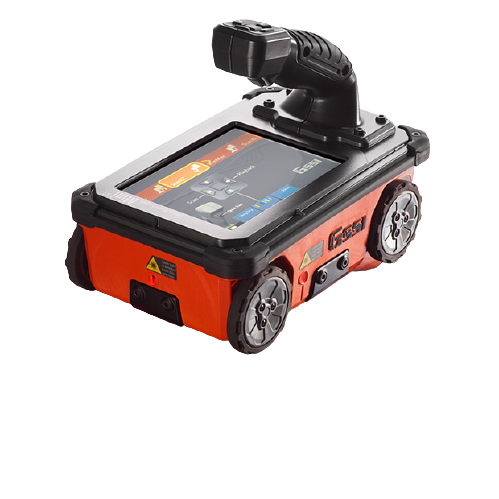RainierGPR Service Areas: Where We Provide Premier Concrete Scanning
RainierGPR Service Areas: Where We Provide Premier Concrete Scanning
Blog Article
Concrete Scanning: A Vital Step Towards Making Certain Architectural Integrity and Safety And Security
In the world of building and construction and facilities upkeep, the importance of concrete scanning can not be overemphasized. By employing sophisticated innovation and approaches, concrete scanning serves as a critical device in guaranteeing that the integrity and security of bridges and buildings are maintained to the highest requirements.
Relevance of Concrete Scanning
Concrete scanning plays a vital role in making sure the architectural integrity and safety of buildings and framework projects. By utilizing sophisticated modern technologies such as ground-penetrating radar (GPR) and electromagnetic induction, professionals can non-destructively check concrete frameworks to detect prospective flaws, gaps, ingrained things, and reinforcement layout. This process allows early detection of abnormalities that can endanger the security of a framework, preventing costly problems and making certain the safety and security of occupants.
Concrete scanning is especially necessary throughout the preparation and building stages of a job. Prior to boring, reducing, or coring into concrete, scanning assists determine the accurate locations of rebar, post-tension cable televisions, and other embedded elements, reducing the threat of unintended hits that can cause architectural weaknesses. Additionally, concrete scanning aids in quality control by validating the density of concrete covers and finding any kind of inconsistencies that may influence the total durability of the framework. Ultimately, buying concrete scanning services is not only a proactive measure to minimize dangers however likewise an essential step in the direction of keeping the long-lasting safety and security of buildings and infrastructure.
Technology for Concrete Examination

Benefits of Very Early Detection
Prompt discovery of architectural problems can dramatically reduce risks and guarantee the durability of building jobs. By determining potential problems early on in the construction process, stakeholders can take aggressive actions to resolve concerns prior to they intensify into bigger and extra expensive issues. One of the key advantages of very early detection is the prevention of architectural failings, which can position serious safety threats and bring about task delays and financial losses.
Moreover, very early discovery enables timely repairs and upkeep, which can aid expand the life-span of the structure. By attending to problems immediately, building teams can stay clear of costly repairs or perhaps the need for early replacement of architectural elements. This proactive strategy not only saves time and cash but additionally improves the overall safety and security and resilience of the building and construction job.
Additionally, very early detection can boost job preparation and decision-making by supplying stakeholders with valuable understandings into the condition of the framework. Armed with this details, project managers can make enlightened choices relating to construction approaches, timelines, and materials, resulting in a lot more reliable and effective job end results.
Making Certain Structural Security
Making certain the structural stability of a building and construction project is critical to its security and long life. Architectural stability refers to the capability of a structure or framework to keep its form and function under ecological problems and numerous loads. To achieve this, complete analysis and surveillance of the framework are essential. Concrete scanning plays a vital function in making certain architectural security by detecting potential issues such as voids, delamination, or reinforcement corrosion that could compromise the integrity of the structure over time.
By using sophisticated scanning modern technologies like ground-penetrating radar (GPR) and electromagnetic i was reading this induction, construction professionals can non-invasively evaluate concrete frameworks to determine areas of problem under the surface. This proactive strategy permits for the early detection of flaws or weaknesses, enabling punctual repair services or reinforcement to avoid architectural failures.
Normal concrete scanning during various building stages and throughout the life process of a structure can assist maintain its security, reduce threats, and guarantee the safety of passengers. By prioritizing structural stability with concrete scanning, construction jobs can enhance their durability and sturdiness, ultimately adding to better security and long life.
Avoiding Essential Failures
To guard against disastrous occasions, precise surveillance and proactive maintenance are essential in preventing critical failures within architectural structures. Discovering possible concerns before they intensify is crucial to stop architectural failings. Implementing routine assessments, such as concrete scanning, can expose surprise defects like spaces, fractures, or deterioration that can compromise the stability of a structure. By utilizing sophisticated scanning technologies like Ground Permeating Radar (GPR) or Concrete X-ray, engineers can non-destructively examine the problem of concrete and recognize powerlessness that require reinforcement or repair service - RainierGPR Service Areas.

Verdict
To conclude, concrete scanning plays a crucial role in guaranteeing structural integrity and safety and security by making use of innovative innovation for very early detection of possible problems. This positive method helps prevent critical failings and makes sure the stability of structures. It is important to focus on concrete assessment as a common method to protect the long life and security of buildings and framework.
Concrete scanning plays a critical function in ensuring the architectural stability and safety of structures and infrastructure tasks. click to find out more Furthermore, concrete scanning help in high quality control by verifying the density of concrete covers and discovering any type of disparities that might affect the total toughness of the structure. Concrete scanning plays a critical function in Web Site guaranteeing structural security by discovering potential problems such as voids, delamination, or reinforcement rust that could compromise the stability of the framework over time.

In conclusion, concrete scanning plays a crucial role in ensuring structural honesty and safety and security by using sophisticated innovation for early discovery of possible problems.
Report this page